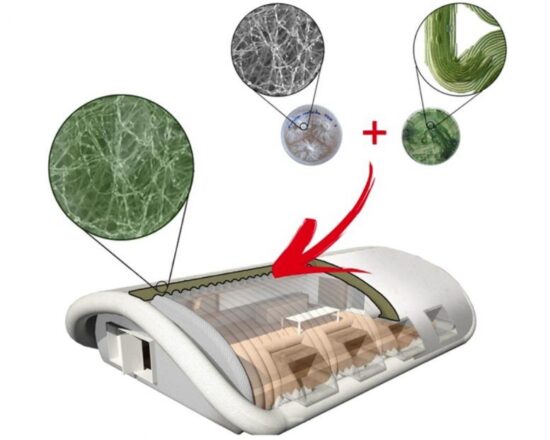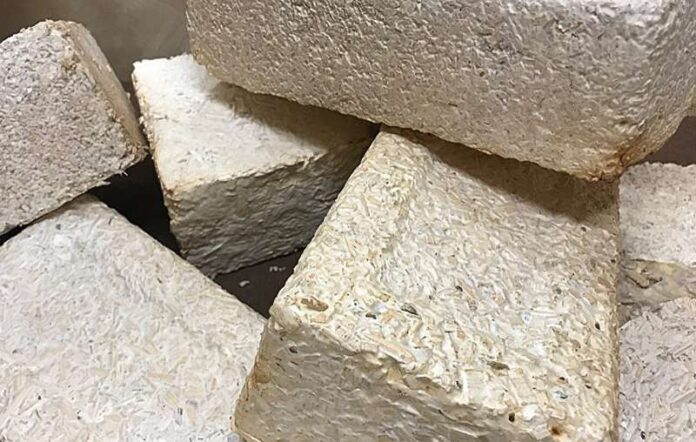NASA is exploring how to use fungi to build habitats on Mars and the Moon. The Myco-Architecture Off Planet Project is experimenting with mycelium which forms the root network of fungi as an off-world building material. If successful, it could become the primary construction material for future habitats on the Moon and Mars.
When we think of fungi we picture toadstools, mushrooms, truffles, puffballs and brackets seen on forest floors and tree trunks. What we don’t see is what lurks beneath, the mycelium network of hyphae, long tubular filaments extending for hundreds of metres from what is visible atop. Mycelium makes up the largest living organisms on Earth. Their hyphae can tolerate cold and a lack of water and go dormant under such conditions. Add a little water and heat and mycelium starts to grow. In looking at off-world environments, NASA, therefore, sees the promise of mycelium-based mycotecture for future off-world habitats.
Mycelium And Mycotecture
Today, hyphae’s properties have made mycelium an interesting material for industrial applications. Where can you find it in the 21st-century human world? Earlier this year I described mycelium as becoming the next big thing in technology. I listed its use to construct biodegradable coffins, compostable packaging, foods like faux bacon, textiles like faux leather, flooring and drywall.
Add to this the recent announcement from a Belgium-based company, Novobiom, and U.S.-based Mycocycle, who have created bioremediation products from mycelium to clean soil and contaminated construction materials.
The International Journal of Biomaterials lists existing products made from mycelium composites as substitutes for cardboard, wood, gypsum, cement, polymers and plastic. Talk about the “magic of mushrooms” turning into insulation, wallboard, bio-cement and Mycocrete.
Mycelium to the Moon and Mars
NASA’s Lynn Rothschild who works at the agency’s Ames Research Center writes:
“Mycelial materials…show compression strengths superior to dimensional lumber, flexural strength superior to reinforced concrete, and competitive insulation values.”
Combined with Lunar or Martian regolith and locally sourced water mycelial materials could be the way for NASA to “grow” habitats in these off-world locations. Add humans and their organic wastes and through mycelium bioremediation NASA can incorporate melanin into the walls and roofs of these habitats to produce radiation-protection barriers. Mycomaterials should prove durable in low-gravity environments, and even after degrading can serve as fertilizers for colonists’ off-world farms.
What about the cost of getting mycelium feedstocks to the Moon or Mars? Dried out, the mycelium will weigh very little when added to payloads launched from Earth. You won’t need a lot of it added to the payload, either, because once on the Moon or Mars, with a little lunar water from ice and heat from sunlight, the mycelium will replicate and start to grow the required self-repairing structures.
Mycocrete For Terrestrial Construction
The bricks at the top of this posting have been made from mycelium, wood chips and yard waste. The finished product is mycocrete which could one day replace traditional concrete in building construction here on Earth.
Mycocrete consists of hyphae knitted into moulds. It is lightweight, can be shaped into a variety of forms, not just bricks, and is characterized as being stronger than concrete. It is biodegradable and eco-friendly. It can be combined with all kinds of biomaterials to serve different uses.
Newcastle University in the United Kingdom has created the Living Textiles Research Group where mycelium is turned into living engineered materials for construction and other applications. The mycelium with biohybrid fibres can make scaffolding and highway construction materials with self-healing properties. Newcastle’s research could lead to the rethinking of terrestrial building infrastructure with mycelium playing a significant role.
NASA, meanwhile, is looking to mycelium to help it out of this world. Delivering the fungi to the Moon with water from ice found in situ and simple-to-erect frameworks will grow fully functional habitats. The Mycotecture Project already has Moon habitat designs that use mycelium combined with lunar regolith such as the one in the image below. All that remains is to get humans back to the Moon. What gets designed and built there will be translatable for future habitats on Mars.









